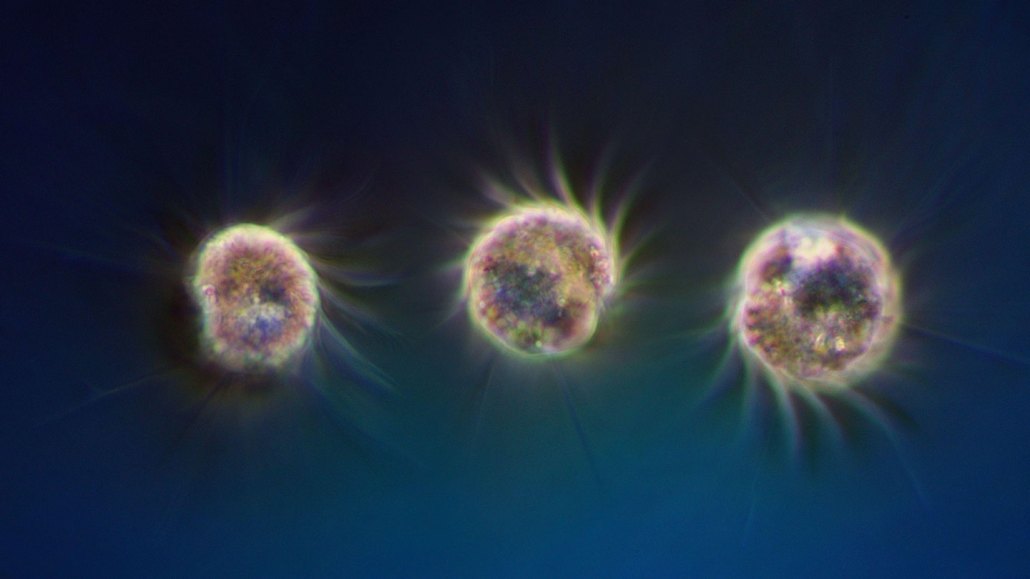
Halteria ciliates (three shown) each ate around 10,000 to 1 million viruses daily in laboratory experiments. In the wild, that number could skyrocket to up to around 1 quadrillion, scientists estimate.
Scenics & Science/Alamy Stock Photo

Halteria ciliates (three shown) each ate around 10,000 to 1 million viruses daily in laboratory experiments. In the wild, that number could skyrocket to up to around 1 quadrillion, scientists estimate.
Scenics & Science/Alamy Stock Photo